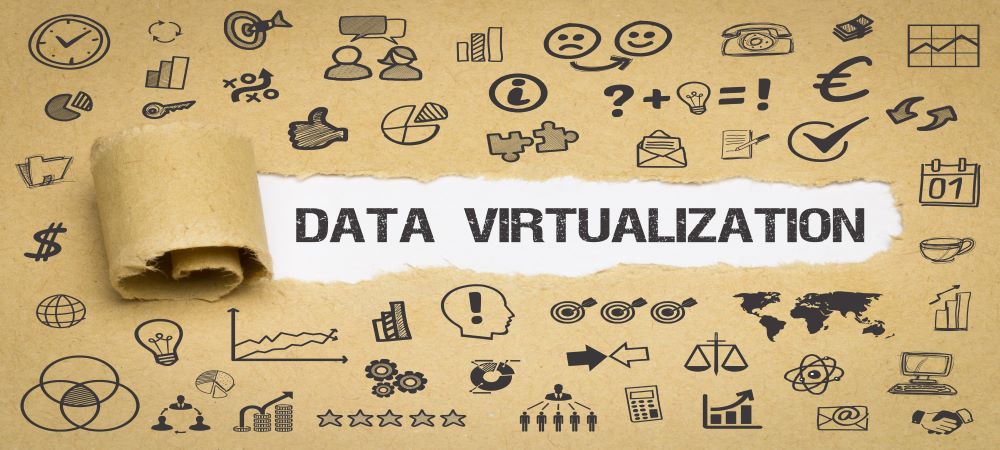Technology is at the heart of any modern stock exchange. For the Johannesburg Stock Exchange (JSE), which has over 140 disparate data sources across its data landscape and over 120 different applications which need to operate in perfect harmony to ensure that there is accurate settlement and risk, having a suitable data virtualisation platform is paramount to its operations. Chester Enslin, Head, IT Enterprise Integration, JSE, explains why it was important for the company to implement the Denodo data virtualisation platform, and how the rollout has helped the JSE to eradicate data misinterpretations and reduced duplication.

Talk us through your role as head, IT Enterprise Integration at Johannesburg Stock Exchange (JSE) and when you joined the company?
I joined the JSE around 14 years ago. Before that I spent over 12 years in software development at Accenture, consulting to the public sector, mining as well as healthcare industries. In my role now, I oversee and manage the delivery of COTS and custom enterprise integration software, as well as the software quality assurance for the organisation.
Since taking over in your role, how have you guided your IT team to put technology at the heart of delivering the business objectives for the JSE?
Technology is at the heart of any modern exchange. Technology is used as a key differentiator and gives exchanges the edge in a capital market. The industry relies heavily on technology innovation. Moreover, reliability and availability are critical success factors – ask any trader who cannot access a market for more than five minutes due to a technology issue. Markets move rapidly in reaction to events, and the underlying tech must be able to handle that. The exchange has a wide range of applications that need to integrate quickly and reliably. Therefore, my approach has always been to apply good design, tenacious rigour and embed proven technologies into the organisation to achieve our business goals.
Given that the JSE has over 140 disparate data sources across its data landscape and over 120 different applications which need to operate in perfect harmony to ensure that there is accurate settlement and risk, why was it important for the team to implement the Denodo Platform?
The JSE operates in a broad spectrum of the capital markets infrastructure. Its day-to-day operations involve many core business systems. One of the key functions we provide is a post-trade function within the end-to-end business service, whereby trades that are executed within the various venues are settled centrally. Generally, the post-trade, risk and collateral management aspects of an exchange are offset to other institutions that calculate net position and risk for a particular trading firm. These amounts can quickly run into millions of dollars in this billion-dollar market. The data must be sourced and integrated from various heterogeneous systems including relational databases, flat files, and APIs, to serve the needs of the various areas. Using traditional batch-oriented extract, transform, and load (ETL) processes was a cumbersome and inefficient process which has been a typical BI pattern. Additionally, the different versions of data entities across different systems created confusion and scepticism around data authenticity. In a high-speed trading environment, it is imperative to remain 100% accurate for 100% of the time, so the JSE needed to look beyond traditional ETL and batch processing tools for data integration and looked for more agile, flexible, and (near) real-time data integration tools. This is where the Denodo Platform came in. The JSE now utilises it to enable trades and deals every day in all capital markets.
Since the Denodo Platform implementation, the JSE has eradicated data misinterpretations and reduced duplication. The platform has contributed to the exchange’s efforts towards a reliable and trustworthy market infrastructure. Having a single version of the source data has helped avoid the pitfalls of inaccurate derived data, where incorrect calculations and closing balances were commonplace. The JSE has been able to provide 100% accurate data, 100% of the time for various functions, particularly for post-trade settlements.
Having looked around for suitable data virtualisation platforms currently on the market, how did you settle for the Denodo Platform?
The JSE was looking for an agile, flexible, and pragmatic solution to integrate its disparate IT landscape without creating further complexities and friction for future transformations. The modern data virtualisation technology instantly caught our attention as it would help us avoid creating physical links and duplication of data, the lack of which earlier had contributed to the inconsistency in the data across systems. For JSE, Denodo was a practical choice in our decision-making process; they are a market-leading vendor in the data virtualisation space with an expansive set of data adapters and a wide range of existing customers. The solution addressed a key capability gap in our solution architecture. Denodo has enabled us to accelerate and control access to data across the organisation, can be rolled out quickly, and most importantly can be adopted by business users with limited technical support.
Given the fact that the JSE is one of the 20 largest stock exchanges in the world and has operated as a marketplace for over 120 years, how did you as head, IT Enterprise Integration of the company, together with your IT teams involve the business line leaders at C-Suite to ensure buy-in for the Denodo Platform rollout?
The IT team created an Enterprise Integration roadmap which was approved at EXCO. The roadmap was a result of extensive investigations into our burning issues, as well as taking an educated guess to what the future may hold. We then embarked on an incremental journey to integrate the product into the institution. Because the product was addressing specific burning issues, we were able to solve these issues during various project implementations. Thus, using the projects as a vehicle to implement the product. Executive sponsors were very supportive as they understood the historic issues, and how the Denodo Platform managed to solve them.
Who led the business case for the JSE to implement the Denodo data virtualisation platform and what support did you receive from your C-Suite peers?
The IT Enterprise Architecture team led the business case. One key factor for the successful implementation of the business case was to ensure that the implementation team had an equal voice. The combination of Enterprise design together with Solution design teams removed the silo mentality and broke down ivory towers. Because we used an incremental approach to rollout, various C-Suite sponsors enabled the delivery of the platform. A solid track record is important – therefore it was critical to ensure that after each phase, the platform was reliable, cost effective and performed to expectation. Another key factor, particularly in the exchange environment, is IP and continuity. Despite various challenges, the finance team ensured that the team remained intact, even to this day, to retain deep skills in the tech.
How long did the Denodo Platform project take to implement from the time approval was granted to scoping, designing and rollout?
After approval, the pilot phase was completed in nine months. During this time there was an element of foundational work performed to establish concepts like Canonical Models, high availability etc. We also performed rigorous testing on the platform as well as functional testing. A soft go-live followed, which compared the product in production to its replacing technologies and once we were satisfied, we decommissioned the old tech.
How did the JSE, despite its organisational challenges which I suspect would be very similar to that of a large organisation, ensure that the project realised its business objectives and planned goals?
Building an integration team was key, as was having the focus of the team on managing and targeting the right business goals.
Another thing that was important was having a change management approach and solid strategy around how to go about moving legacy systems across effectively, whilst ensuring the foundations were there for our teams to get the most out of the virtualised data interface once it was ready. We achieved this in a single major project implementation after the pilot phase, followed by incremental releases.
Other than data virtualisation and verification that has now been achieved following the rollout of the Denodo Platform, what other use cases is the JSE using Denodo in its day-to-day operations?
By using the Denodo Platform, it is now comparatively much easier and less expensive for the JSE to integrate data systems and perform end-to-end testing.
Data virtualisation, complimented by other factors, has also enabled the JSE to run multiple projects simultaneously due to an increased control and versioning capability. It is commonplace for the integration team to execute on several projects in parallel. With data virtualisation, the impact of physical changes applied to the source systems can be shielded from the consumer systems, and vice-versa.
What would you cite as challenges your IT team encountered during the implementation of the Denodo Platform?
The number one challenge we experience is change management. Techies would much rather source data from other systems themselves than use a centralised data virtualisation service. There is continuous effort made to educate and guide the technical teams, particularly as they often miss the big picture. Data costs at the exchange would have been significantly more expensive, particularly due to the complexity of the data.
Another unique challenge we face is the nature of the data. Exchange data is not commonplace, and the lexicon is unique. Therefore, it is necessary to develop deep IP in both the data virtualisation tech, as well as capital markets industry knowledge. This introduces many challenges in terms of people management, cost containment and speed of delivery.
Since implementing the Denodo Platform, what has changed or improved in terms of the various business functions and customer service offerings that the JSE has to perform and offer in the marketplace?
Before implementing the Denodo platform, data was severely duplicated in the environment. After the platform’s introduction, data duplication has decreased significantly. We have also prevented an explosion in query costs as we have eradicated query duplication. In the past we had technical teams writing the same query in each of their applications, and thereby duplicating the extract. Moreover, misunderstood nuances in exchange data led to several systems handling critical data incorrectly. When these problems surfaced, we intervened and used the data virtualisation solution to resolve this.
Essentially, this has allowed us to avoid unnecessary costs and focus our investments elsewhere. Also, it has allowed for increased control over data and its compliance, with an associated increase in the quality of source system data.
Was the project implemented using in-house expertise or you worked with a Denodo certified solution provider partner? If yes, what is the name of the company and what role did they play in the whole project?
The JSE worked directly with Denodo and did not use a solution provider. It was an onsite collaboration between the JSE DevOps team and a dedicated Denodo product experts’ team. Both companies collaborated extensively during the project. The project team even pioneered a few new features within the Denodo platform, as well identified several software bugs which were resolved. Several staff members in both companies have a close and strong affiliation with one another.
What other Digital Transformation projects is the JSE currently working on following the Denodo Platform implementation?
Serious thought is being given to full cloud implementation. The capital markets industry is hypersensitive to latency and primarily focus on transaction performance in a few microseconds. But future advances in technology may overcome the onsite/offsite latency barrier, which would open opportunities for virtualised data being made available to our customers.
Click below to share this article

